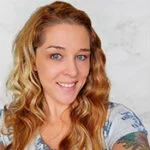
Babies cry — it’s an unavoidable fact of life, and responding to your infant’s distress is part of being a parent. Crying is a normal behavior in infants, who have no way of tending to their own needs. It’s a survival strategy, but it also helps build a connection between the baby and the caregiver since it typically prompts a caring, attentive response to the baby’s needs.
But, some babies cry a lot, and for the parent, it can feel overwhelming and draining, especially when it leads to poor sleep for the baby, tiredness, and depression in parents. Parents nowadays are under a lot of pressure, with most two-adult families both working and busy lifestyles that leave little time for sleep and relaxation being the norm.
It’s no wonder parents might search for ways to take some pressure off, including the ever-expanding tech-based options promising to take on less desirable tasks. Now, Amazon’s Alexa can detect and respond to babies’ cries, leaving parents to sleep or providing some time to reach the crib.
“There is nothing wrong with leveraging tools like Alexa, sound machines, or music to soothe a baby. Just be sure that is what they need to fall back asleep,” says Dr. Nina Farzin, a baby sleep expert and founder of the infant product company Oogiebear. There’s a fine line when it comes to using machines to take over long-standing parental responsibilities, and the potential effects are worth considering.
How Alexa Soothes Your Baby Back to Sleep
Machine learning models are trained to recognize the sound patterns of baby cries, differentiating them from other sounds in the environment. Alexa uses audio-sensing microphones to continuously “listen” for baby’s cries, and when crying is detected, it triggers a response, such as soothing sounds or adjusting lighting. All you need to do is set up a routine in Alexa.
- Open the Amazon Alexa app.
- Go to the “More” tab.
- Select “Routines.”
- Tap “+” and choose “Sound Detectin”. Pick the “Soothe Baby” routine.
- Set it to the device you will use to detect the crying. Set runtimes.
- Choose actions such as playing lullabies.
Machine learning has come a long way, and Alexa is relatively accurate when detecting baby crying sounds, but there can still be false positives that trigger a response. You can fine-tune the sensitivity level, which can help reduce the chances that Alexa will step in unnecessarily, potentially waking the baby up instead of keeping the peace.
The Importance of Responding to Your Baby’s Cries
Attachment theory researchers believe crying is a natural way for infants to signal their need for parental protection (1). This behavior prompts parents to respond with care, which builds a strong bond between parent and child. According to the theory, not responding to infant cries can mean the baby is more likely to develop lifelong attachment issues that play out in future relationships and behaviors.
Looking at it through the lens of evolution, theorists suggest that the night poses more threats than the day, making nighttime interactions possibly even more critical to attachment bonding. So, ignoring your baby’s cries in favor of a robot nanny taking over the responsibility is likely not going to be the best choice for long-term health and mental wellbeing.
Counselor and child expert Helen Neale, founder of Kiddy Charts, says attachment is vital within the first few months of a baby’s life, so care must be taken when relying on something other than a caregiver’s attentive response. “This sounds like a helpful aid, but wouldn’t be a long-term go-to,” she says. She says what’s most important is to support caregivers, allowing them to provide what their baby needs without feeling overwhelmed.
How to Use Alexa Responsibly
Alexa can likely be a valuable tool for supporting overly tired and overwhelmed parents, especially if the alternative is a less desirable response, such as frustration or anger. But it shouldn’t be used exclusively. Remember, your baby still needs to know you are there and that you care.
Neale points out that parents feeling desperate and giving in to outsourcing their parental responsibilities might want to take a step back about the reason for feeling the need for this kind of tech support if it is a regular thing. Consider questions like: “Is Mum getting help with the baby? How does she generally feel about being Mum? Being a mum means they need me time, so is she getting that, too?” she says.
Research shows that the most crucial factor in nurturing the bond between a parent and their baby and developing a child with a secure attachment is not simply responding to crying or fussing during the night but that the response is sensitive, consistent, and in tune with what the baby needs (2). If your baby needs to be changed, comforted, fed, or, as Dr. Fazin stresses, to have their airways cleared or attend to a medical situation, then Alexa won’t be enough to meet these needs.
Other Ways to Soothe Your Baby
There are many reasons why a baby can wake up at night and need soothing. From birth to about three months, babies will sleep for 4 to 5 hours at night with several nap periods throughout the day, extending to up to 8 hours by six months.
Of course, every baby is different, and schedules change all the time, so it’s a good idea to buckle in and accept that there’s not a lot of predictability regarding how much or how long your baby will sleep in one stretch. Instead, arm yourself with some soothing strategies that can give you all the best chances of catching more Zs.
Address Physical Needs
Basic physical needs such as clear airways, warmth, hunger, or a wet diaper should be addressed as soon as possible. Dr. Farzin’s main concern with parents relying on tech is that critical needs, such as clear airways, are being ignored, which could potentially lead to dangerous issues like SIDS.
Wet diapers can lead to rashes, and not addressing hunger might mean baby doesn’t get adequate nutrition, so it’s always a top priority to ensure these basic needs are met before turning to other sources of soothing.
Increase Comfort
Wrapping your baby snugly in a soft blanket mimics the feeling of being in the womb and can provide comfort. Learning to swaddle your baby can keep them cozier and make it more likely they’ll stay asleep.
Skin-to-skin contact is another strategy with a ton of benefits. Holding your baby against your bare chest promotes bonding and warmth and can regulate their heartbeat and body temperature. This is a good way for fathers to get involved in nighttime soothing, positively impacting both baby and mom.
Use Motion and Sound
Motions and sounds that mimic the womb environment can be incredibly effective. Gently rocking your baby in your arms or using a baby swing can be soothing since the rhythmic motion can calm fussy babies. Replicate the gentle “shhh” sound near your baby’s ear, similar to the whoosh of your blood flow and heart pumping. You can use your voice or a white noise machine to do this.
Softly singing or humming lullabies is another traditional baby-soothing method. Research shows that contact with the mother’s voice, both prenatally and after birth, is extremely important for creating an emotional bond between the infant and the mother. While Alexa can undoubtedly take over this duty, there’s something extra special about doing it yourself.
Sources
Farzin, Nina. Author interview. February 2024.
Neale, Helen. Author interview. February 2024.
1. Elizabeth Higley & Mary Dozier (2009) Nighttime maternal responsiveness and infant attachment at one year, Attachment & Human Development, 11:4, 347-363, DOI: 10.1080/14616730903016979
2. Higley E, Dozier M. Nighttime maternal responsiveness and infant attachment at one year. Attach Hum Dev. 2009 Jul;11(4):347-63. doi: 10.1080/14616730903016979. PMID: 19603300; PMCID: PMC3422632.


























